Thieves in the neighborhood:



Michael Küffmeier (Marie Skłodowska-Curie global fellow)
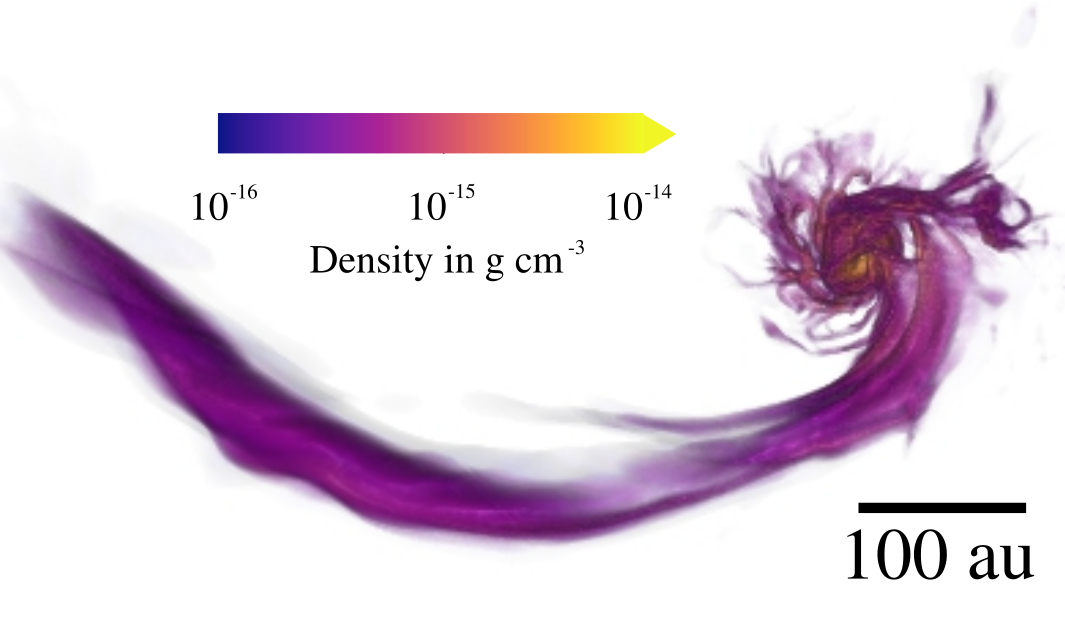
Mass transfer from a disk to its companion
Sigurd Jensen, Jaime Pineda (all MPE), Rajika Kuruwita (HITS), Troels Haugbølle (NBI)
Mind (late) infall:
A source of rejuvenation and misalignment
Wow!
Credit: ALMA (ESO/NAOJ/NRAO)
Credit:
DSHARP team

10 au
50 au
The classical picture

Greene 2001
star formation
planet formation
Is this the full picture?
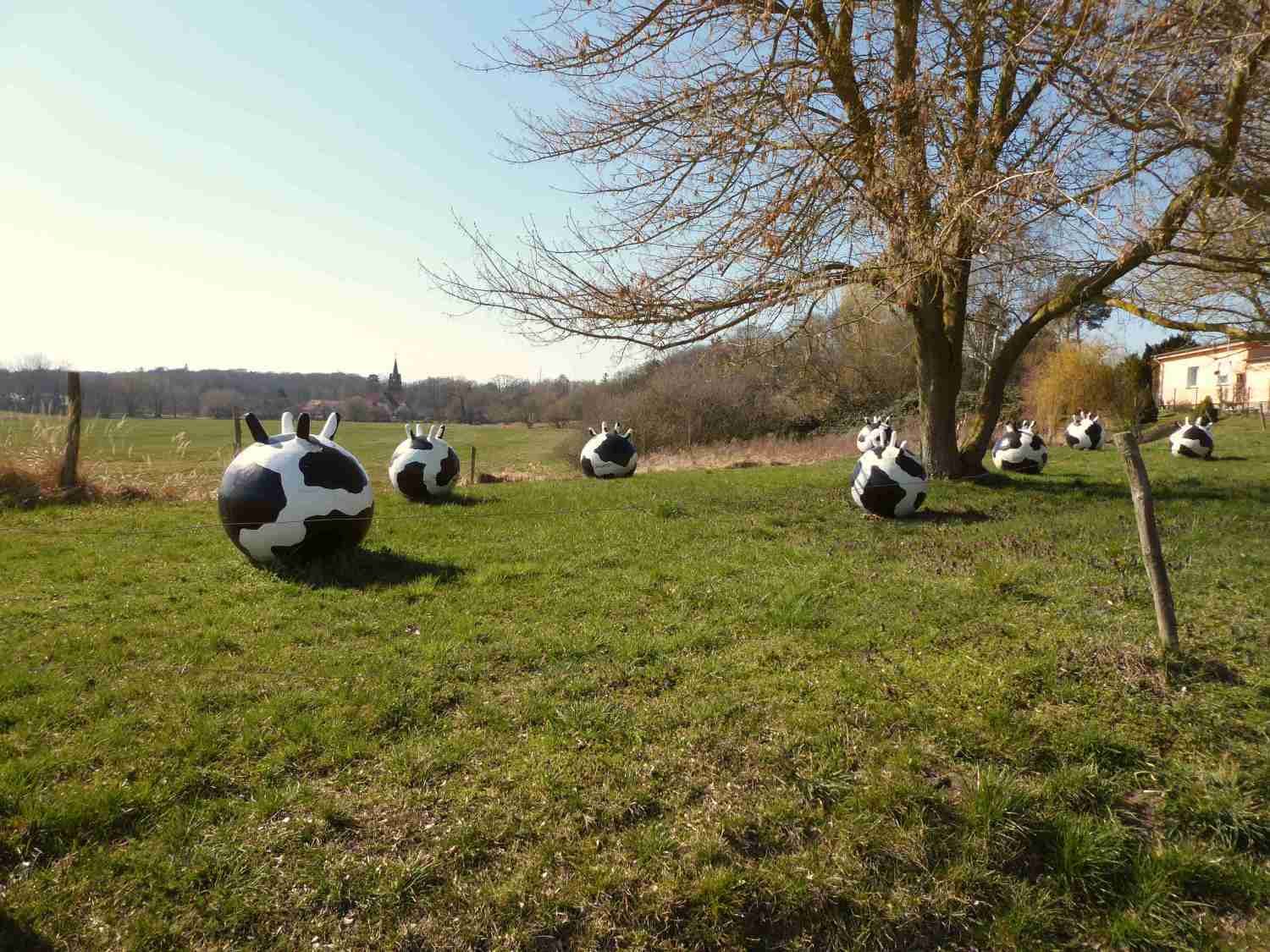
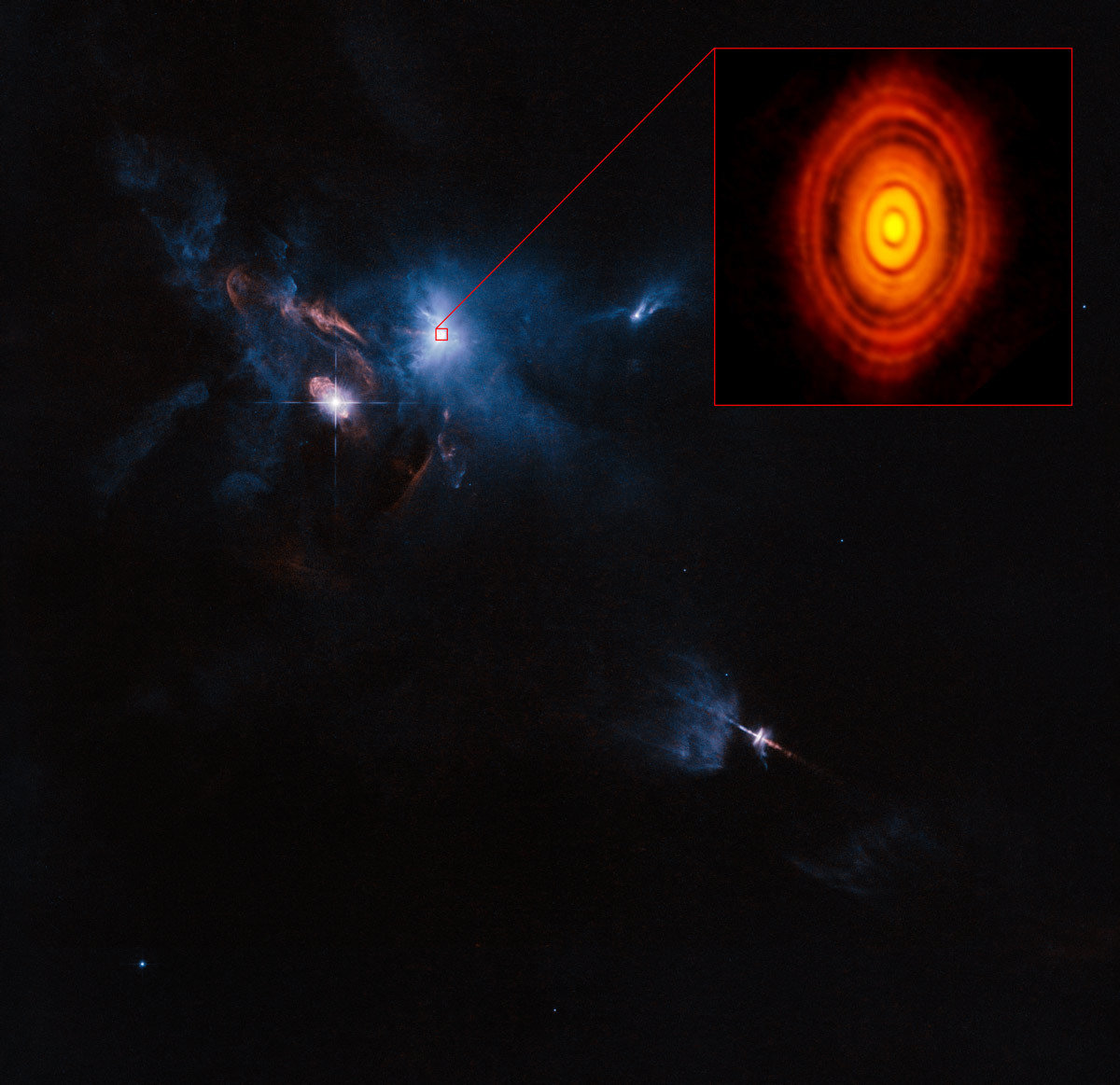
Credit: ALMA (ESO/NAOJ/NRAO)
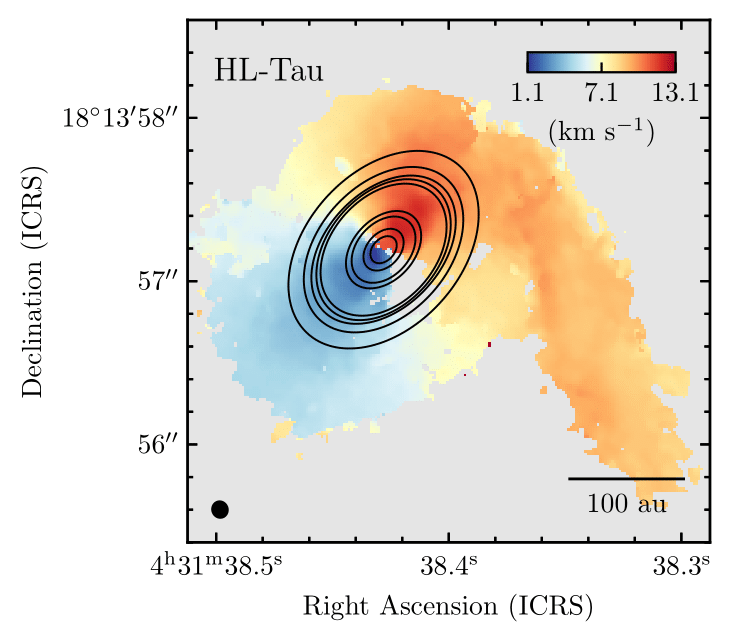
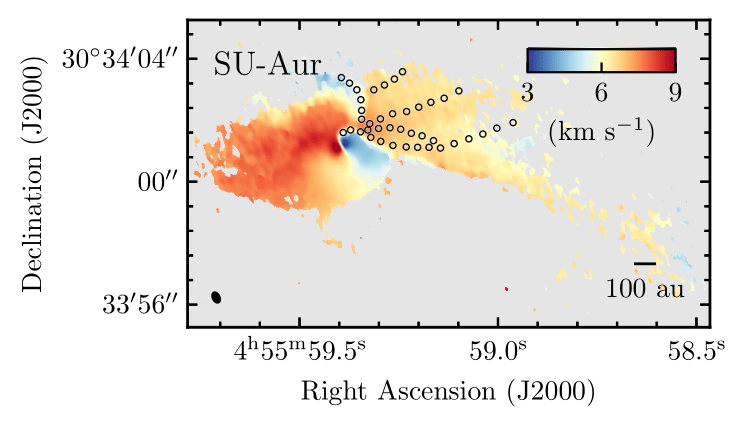
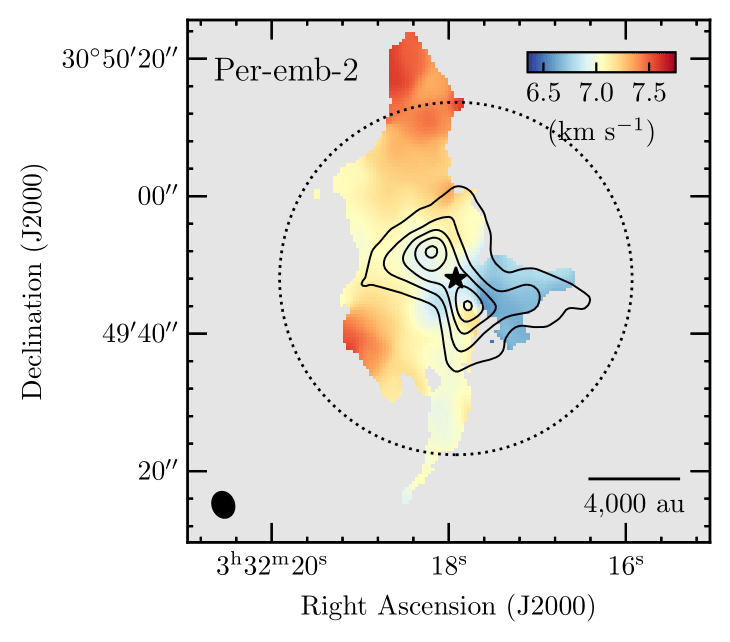
Ginski et al. 2021
Yen et al. 2019
Garufi et al. 2021
Pineda et al. 2020
50 au
see also:
BHB1 (Alves et al. 2020), GM Aur (Huang et al. 2021), IRS 63 (Segura-Cox in prep.), AB Aur (Grady et al. 1999 / Fukagawa et al. 2004), ...
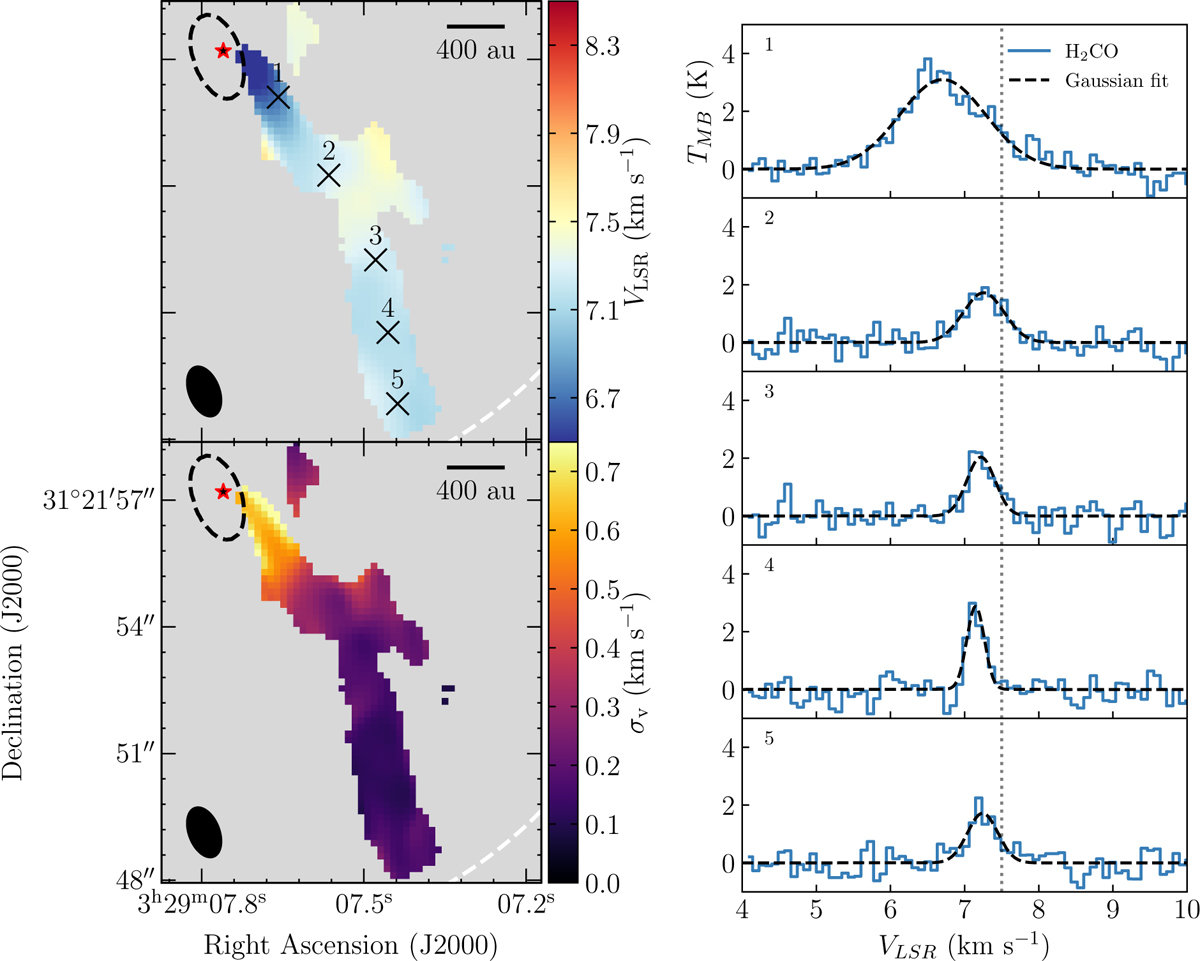
Per-emb-50
Valdivia-Mena et al. 2022

Model star formation in its birth environment
isothermal magnetohydrodynamical (MHD), adaptive mesh refinement (AMR) simulations with RAMSES; maximum resolution 25 AU; 3000 solar masses; sink particles
x
y
1 pc
(same setup as R. Kuruwita presented this morning)
Late infall is common for stars*
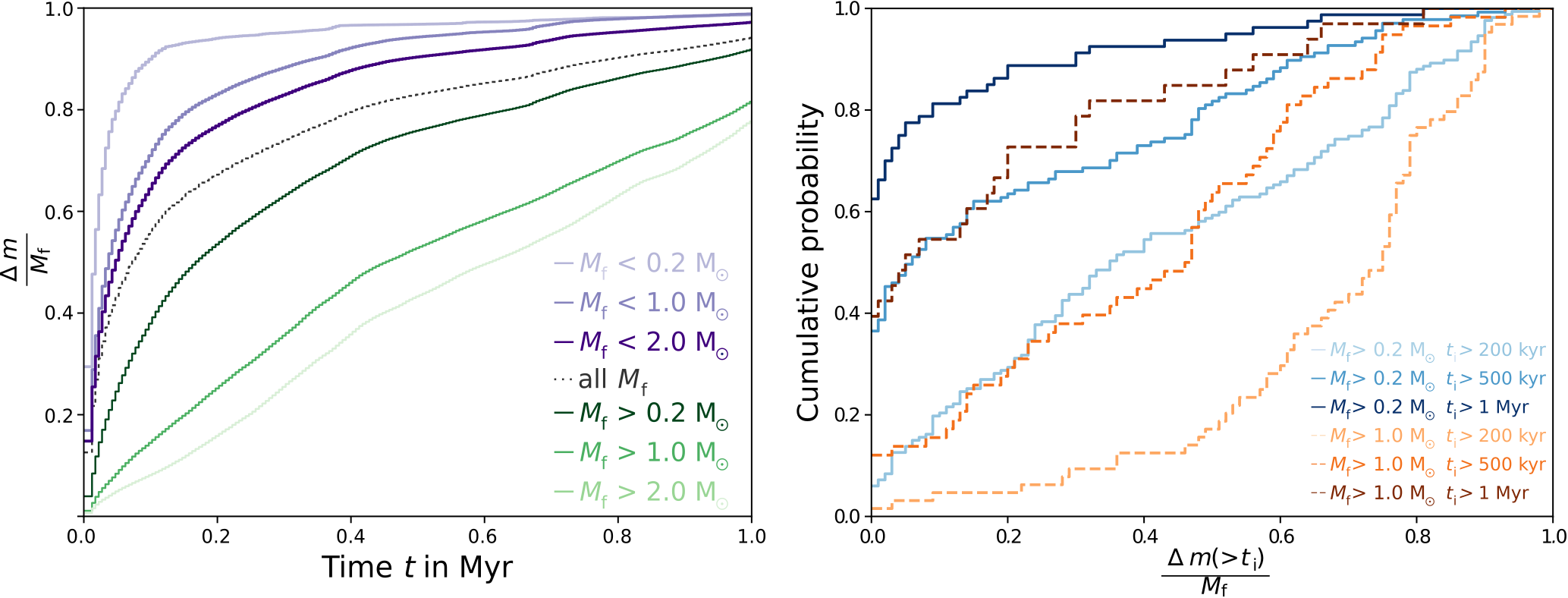
*unless they remain tiny
On average, stars with final masses of more than 1 solar mass accrete more than 50 % of their mass after 500 kyr
15 to 20 % of stars more massive than 1 solar mass accrete 50 % of their mass after 1 Myr
Origin of accreting gas
For solar mass stars ~50 % of final mass from beyond prestellar core! (Pelkonen et al. 2021)
Possibility of replenishing and refreshing the mass and chemical budget
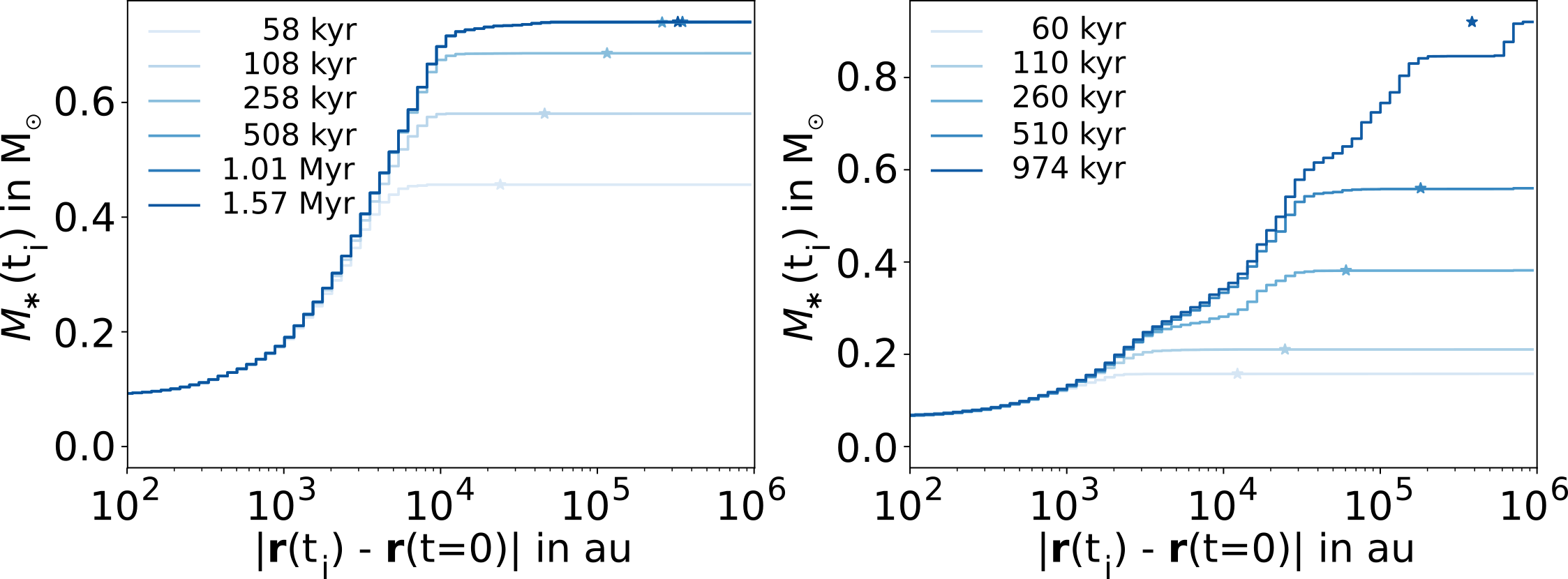

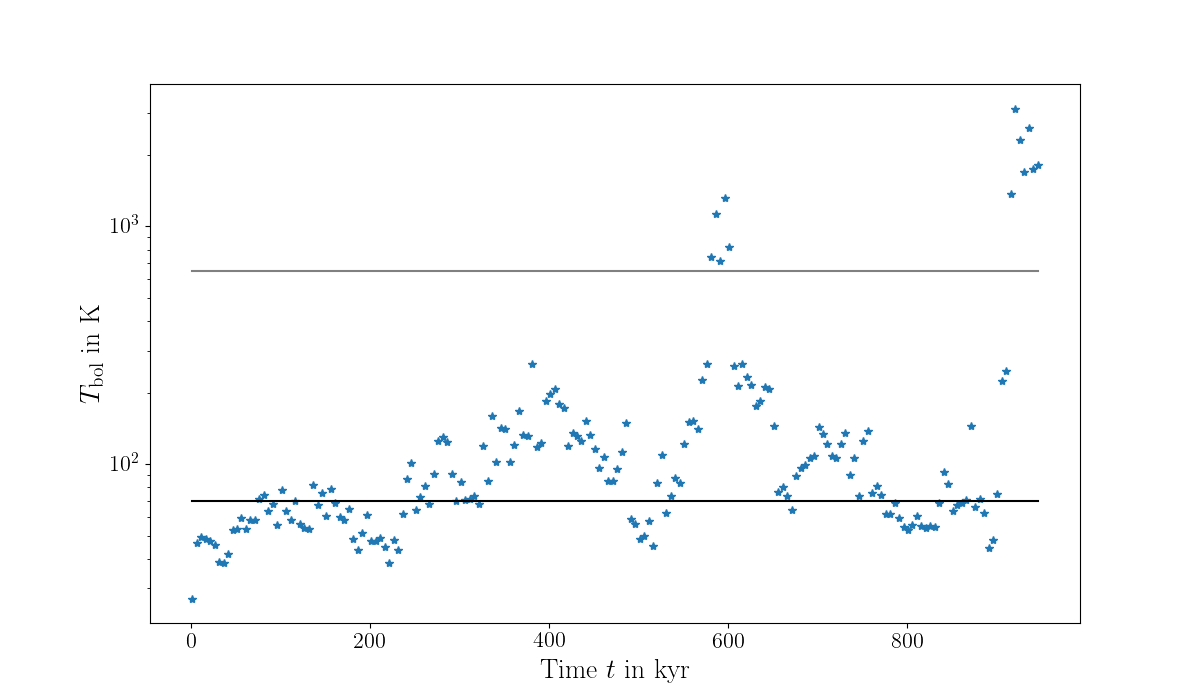
Class II
Class I
Class 0
YSOs can appear younger than they really are
How old is the protostar?



Class II
Class I
Class 0
YSOs can appear younger than they really are
How old is the protostar?



A poor analogy to a conference
Session start
Coffee break!






Class II
Class I
Class 0
Streamers (and shadows?) as signs of infall
Formation of misaligned configuration
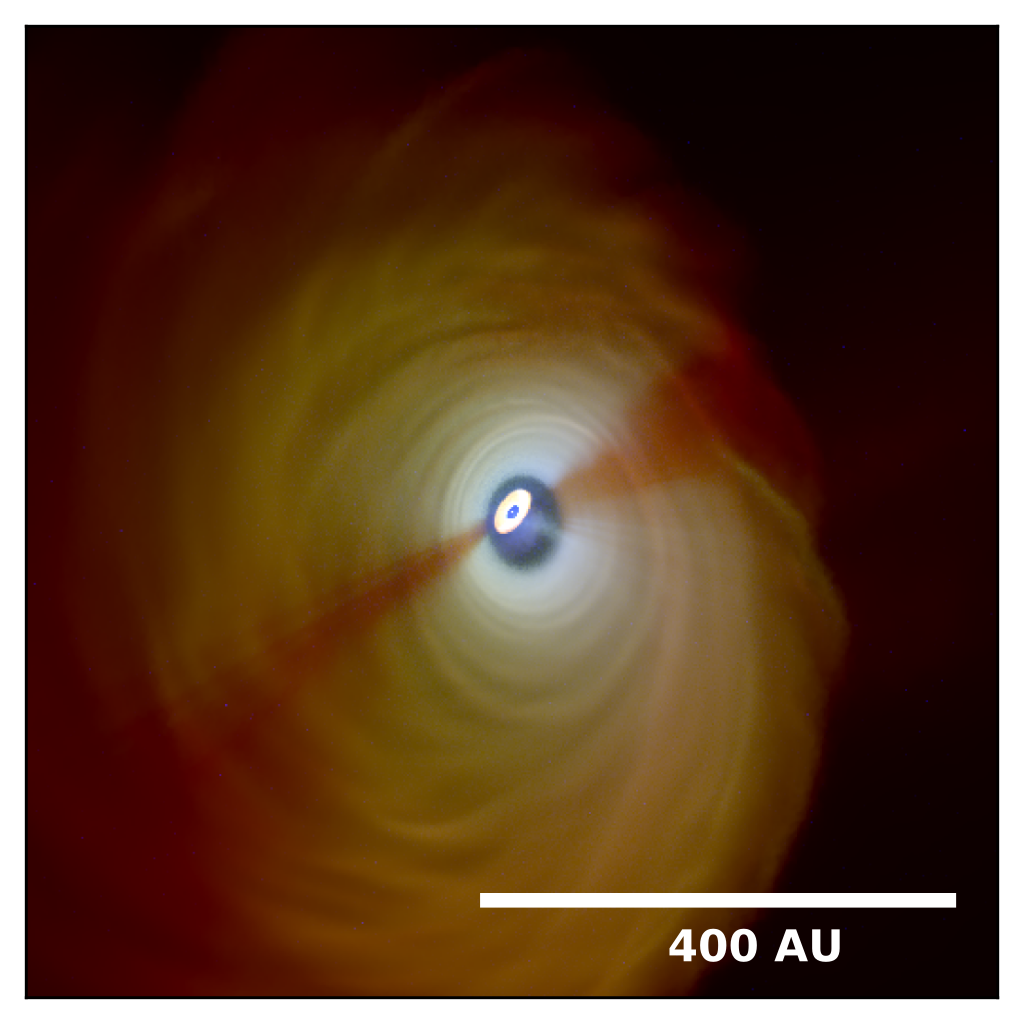
Observable as shadows in outer disk
Küffmeier, Dullemond, Reissl & Goicovic 2021

Ginski et al. 2021
300 au
Accretion of a binary system
zoom-in with maximum resolution of 3 AU; isothermal; ideal MHD; no radiative transfer
You are missing
non-ideal MHD
radiative transfer
resolution
dust
...
1000 au

Accretion of a binary system
zoom-in with maximum resolution of 3 AU; isothermal; ideal MHD; no radiative transfer
1000 au
Accretion of a binary system
Caveat: zoom-in with only maximum resolution of 3 AU; isothermal; ideal MHD; no radiative transfer (more to be done, but intriguing)
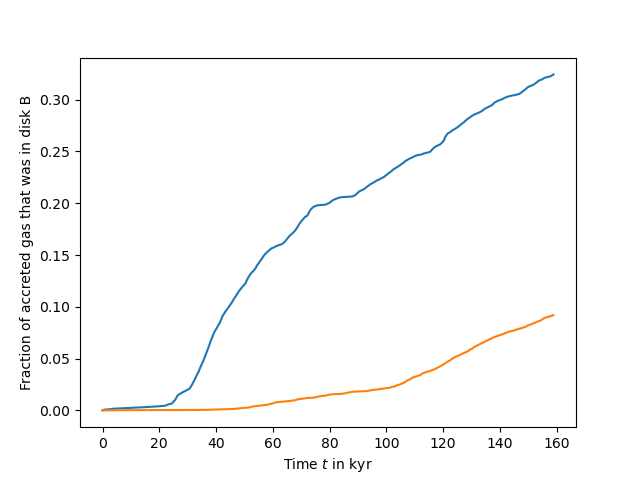
about 30 % of accreting mass goes through the star's own disk
almost 10 % of accreting mass of companion goes through the primary star's disk
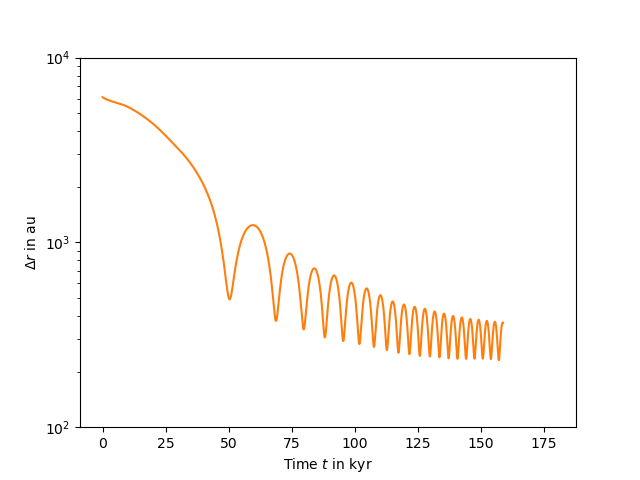
Summary
Pineda ... Küffmeier et al. 'Protostars and Planets VII'
.
.
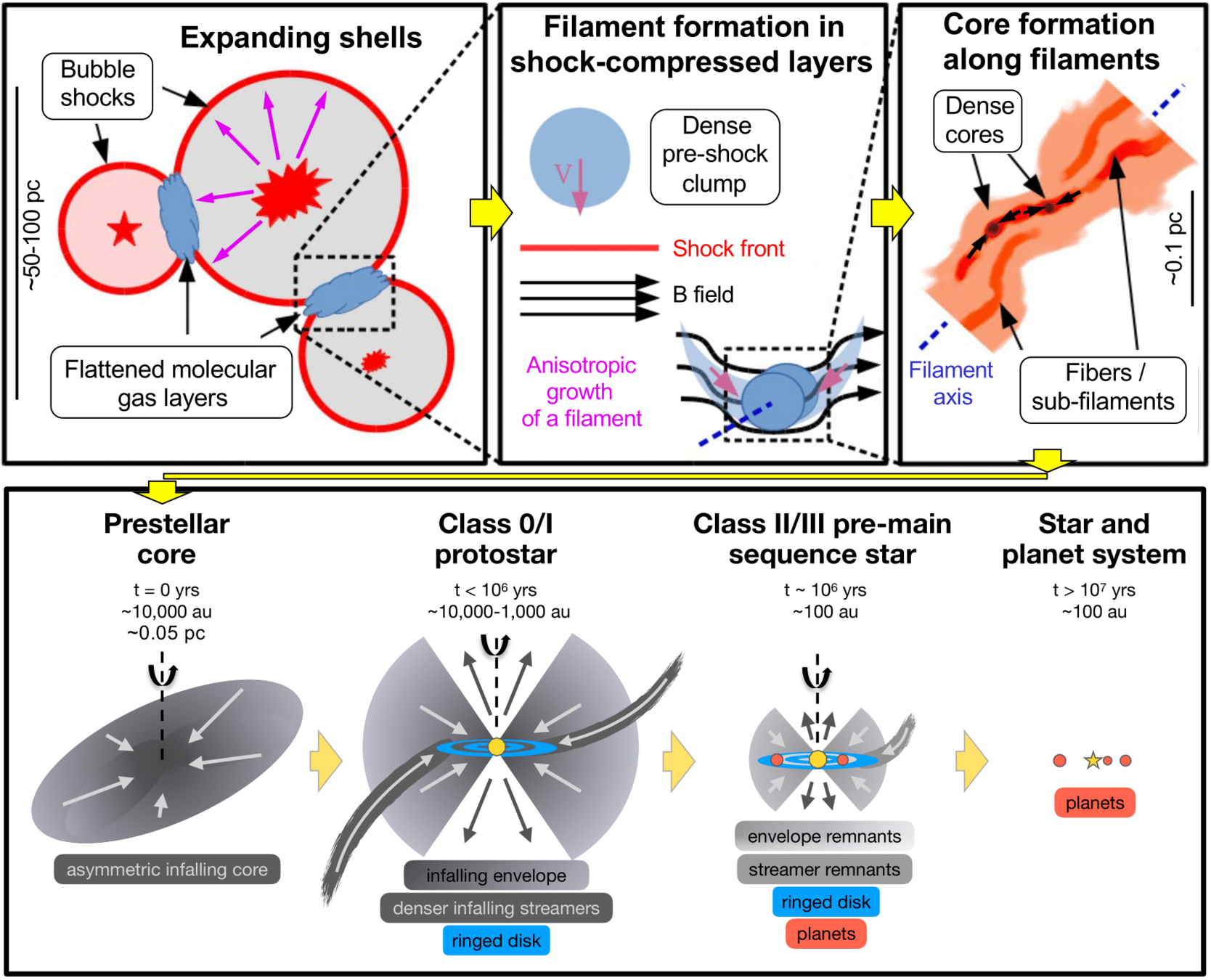
Segura-Cox et al. in prep.
Star & disk can be replenished by infall of initially unbound material
YSOs can be rejuvenated
Mass can be "stolen" from a disk by a companion (TBC)
The connection to the larger scales

Küffmeier et al. 2017 / 2022 in prep.
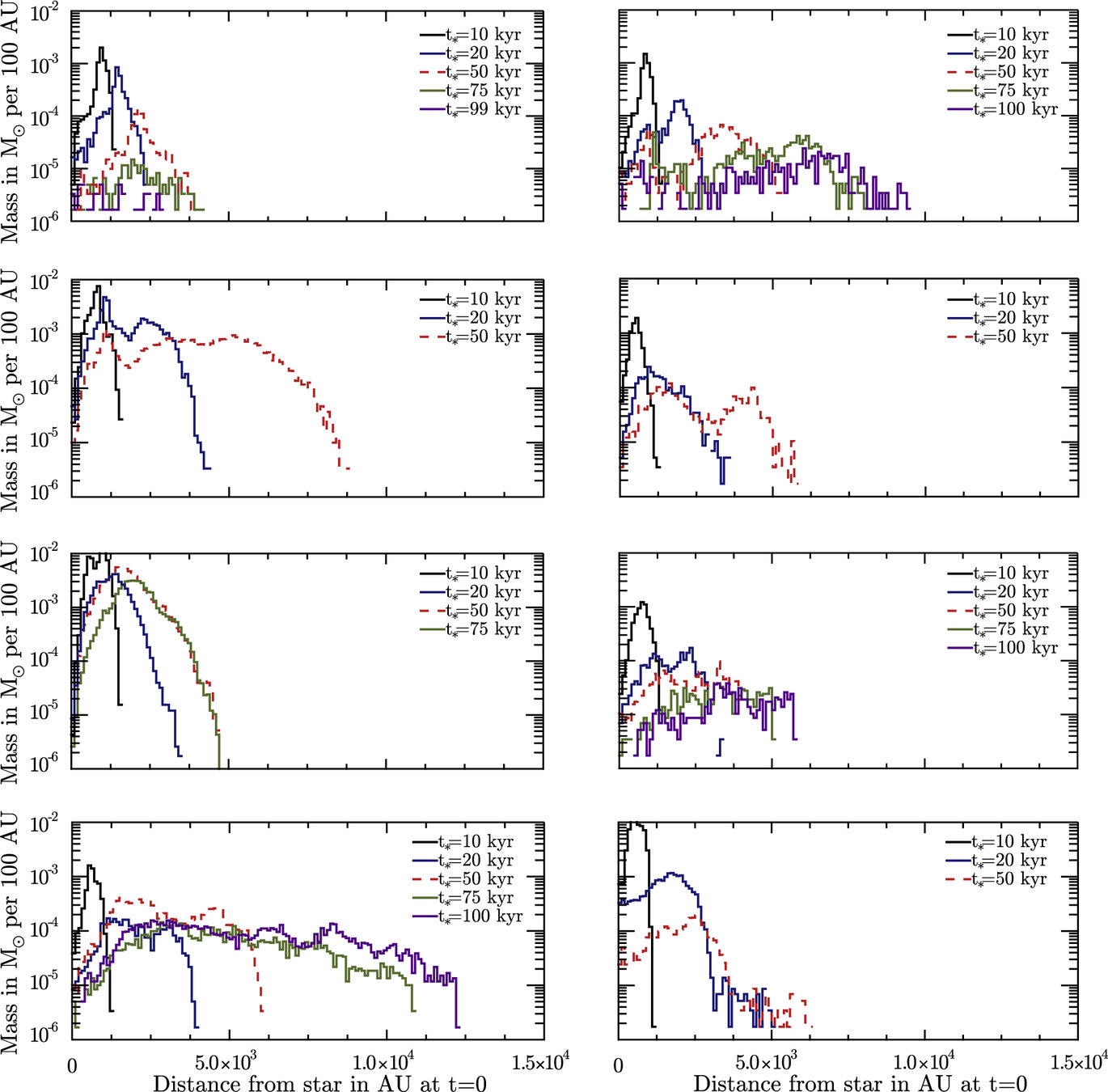
Gas from beyond the prestellar core can fall onto the star-disk system
Simulate cloudlet infall onto disk
AREPO, pure hydrodynamical
isothermal gas
vary infalling angle
vary rotation (prograde, retrograde)
Küffmeier, Dullemond, Reißl, Goicovic et al. 2021
Outer disk forms around inner disk
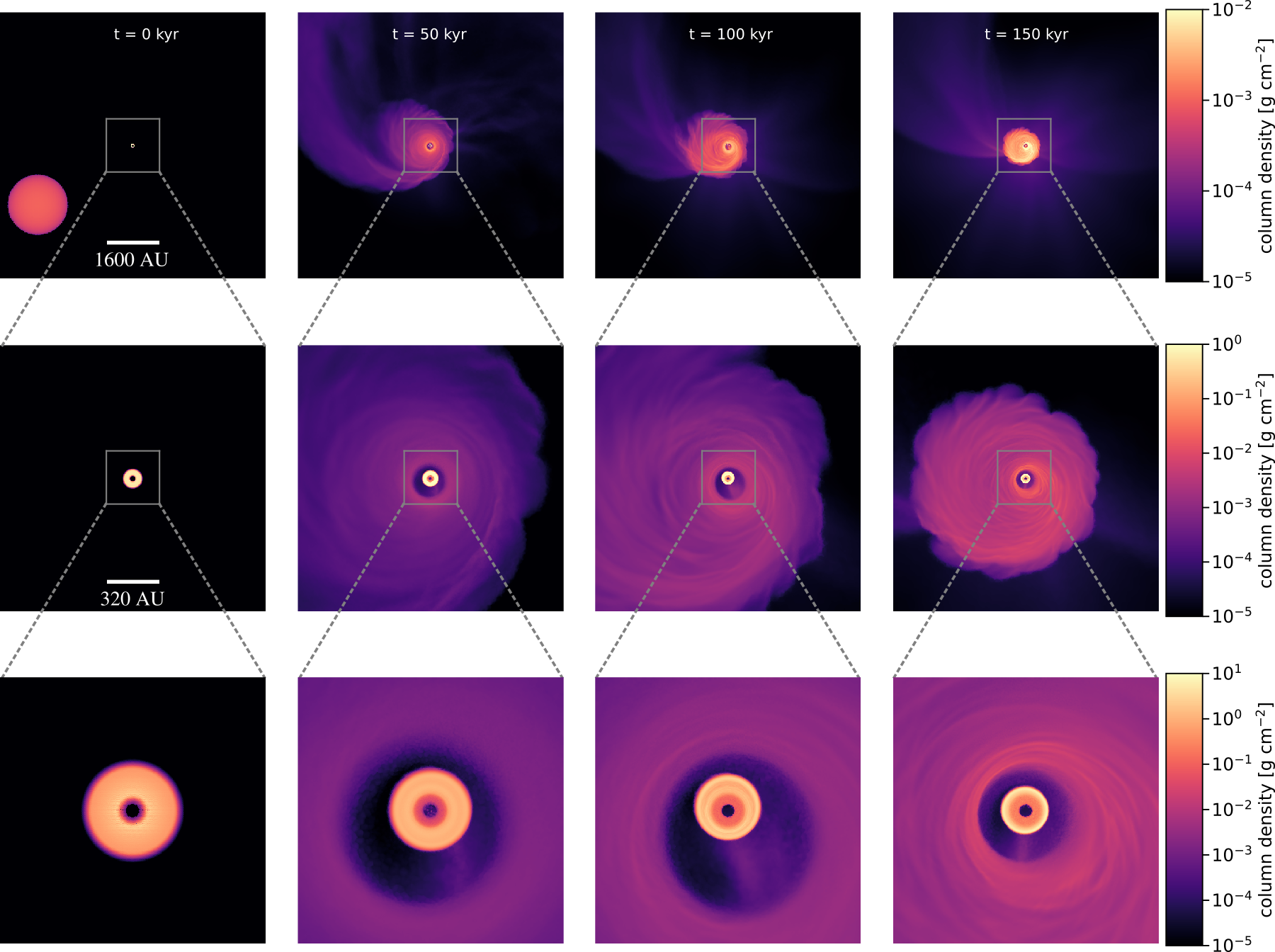
Küffmeier et al. 2021
Prograde vs. retrograde infall

Retrograde infall causes:
- counter-rotating inner and outer disk
- shrinking of inner disk
- enhanced accretion

- larger and deeper gap between disks
see also Vorobyov+ 2016
Küffmeier et al. 2021
Inner disk orientation

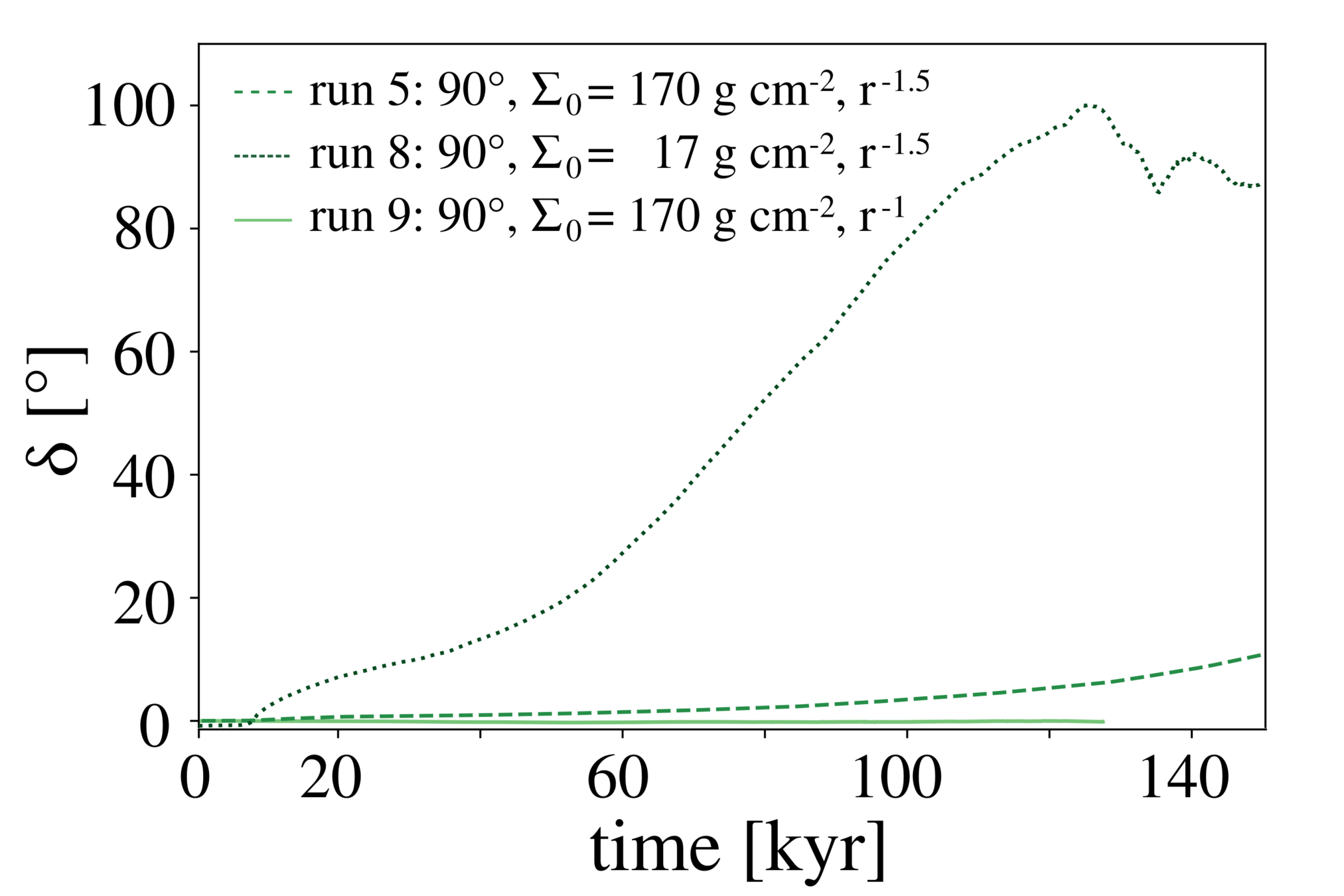
Küffmeier et al. 2021
Copy of HHSF_workshop2022
By kuffmeier
Copy of HHSF_workshop2022
- 232



